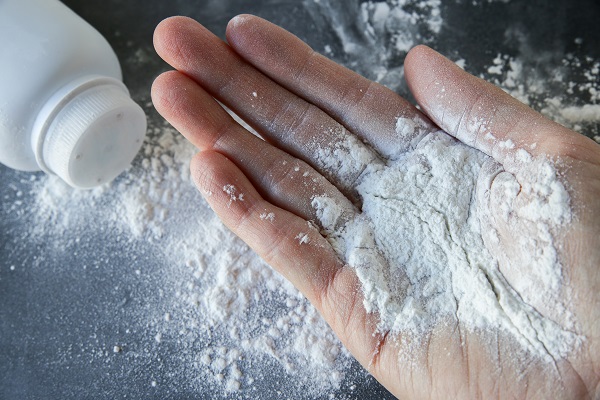
For decades, Johnson & Johnson’s Baby Powder was a trusted household product used by millions of people. However, in 2019, the U.S. Food and Drug Administration (FDA) found asbestos contamination in a sample of the company’s talc-based baby powder, raising serious concerns. Asbestos is a known carcinogen, and even trace amounts of asbestos can pose significant health risks. Since this discovery, Johnson & Johnson has faced numerous lawsuits from consumers diagnosed with cancer after using its talc products.
Those who used Johnson & Johnson’s Baby Powder and developed an illness may qualify to file a claim. Ferrell Law Group has over 20 years of experience helping asbestos cancer victims get the compensation they deserve. Here, our lawyers summarize some of the key factors that determine eligibility for baby powder asbestos exposure compensation.
High-risk groups have the best chance of talc claim success
Certain groups of people are at higher risk of developing asbestos-related illnesses due to prolonged and frequent exposure to Johnson & Johnson’s Baby Powder. The most vulnerable include:
- Long-Term Users of Baby Powder. Individuals who regularly use Johnson & Johnson Baby Powder over a prolonged period are at greater risk of asbestos exposure. This includes both direct users, such as women who apply it for personal hygiene, and indirect users, such as parents or caregivers who use it on infants or children. Consistent use of the product over time increases the chances of inhaling or coming into contact with asbestos fibers.
- Women Diagnosed with Ovarian Cancer. Women who used Johnson & Johnson Baby Powder for personal hygiene and were later diagnosed with ovarian cancer are among those most commonly filing claims. Studies have suggested that talcum powder used in the genital area may travel through the reproductive system and contribute to the development of ovarian cancer. Many lawsuits have already been filed by women who were unaware of the risks and later received an ovarian cancer diagnosis.
- Individuals Diagnosed with Mesothelioma. Mesothelioma, a rare and aggressive cancer directly linked to asbestos exposure, is another illness seen in victims of Johnson & Johnson’s talcum powder. Unlike ovarian cancer, which may be linked to specific use, mesothelioma can develop after inhaling airborne asbestos fibers. Even minimal exposure to asbestos can trigger mesothelioma years or even decades later, making individuals who used the powder in a confined area or frequently applied it particularly vulnerable.
- People with Family Members Diagnosed with Asbestos-Related Cancers. Asbestos fibers can remain on clothing, skin, or hair after contact, meaning family members of those who used Johnson & Johnson Baby Powder may have also been exposed. Inhalation of asbestos fibers by family members can lead to secondary exposure, which can cause illnesses like lung cancer or mesothelioma. If a family member was diagnosed with an asbestos-related disease and had consistent contact with someone using talc-based baby powder, they may also have grounds for a claim.
Criteria for filing a Johnson & Johnson talc asbestos claim
To know if you qualify for a Johnson & Johnson talc asbestos claim, you must meet specific criteria:
- Use of Johnson & Johnson Talc Products. You or your loved one must have regularly used Johnson & Johnson’s Baby Powder or another talc-based product. The more consistent and prolonged the use, the stronger the case may be, especially if the exposure occurred over a long period before the diagnosis of cancer. A lawyer can help establish and document use even when records are not immediately available.
- Diagnosis of an Asbestos-Related Cancer. To pursue legal action, the individual must have been diagnosed with an illness linked to asbestos exposure, such as ovarian cancer, mesothelioma, or lung cancer. Medical documentation proving the diagnosis will be required to establish the claim. A lawyer can help individuals collect the necessary documentation while they focus on their health.
- Timing of the Diagnosis. The diagnosis of cancer must have occurred after prolonged use of the contaminated talc products. While asbestos-related illnesses often take years to develop, victims must act within their state’s statute of limitations, which typically ranges from one to two years from the diagnosis or discovery of the link between asbestos exposure and illness.
Contacting an asbestos lung cancer lawyer
Understanding the nuances of talc asbestos claims helps victims secure the compensation they deserve. Whether you or a loved one used Johnson & Johnson Baby Powder and developed cancer, the Ferrell Law Group can help you get answers and seek justice. Our team will review your case, gather the necessary documentation, and guide you through the legal process. We are committed to holding Johnson & Johnson accountable for the harm caused by their products.
If you or someone you love has been diagnosed with cancer after using Johnson & Johnson Baby Powder, it’s important to act quickly. Contact the Ferrell Law Group for a free consultation to determine if you qualify for a talc asbestos claim and start your path to justice.
“You have no idea how much my compensation has helped me! Your staff was just so kind and helpful. They always made sure I was updated on my case. Thank you all from the bottom of my heart.” - Rozalie
